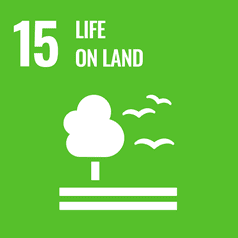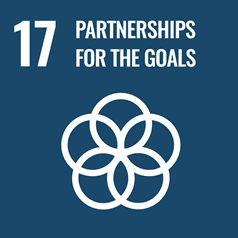
Easing the sting
of snakebites
The University of Newcastle is leading world-first research programs that are delivering benefits to patients and our healthcare system.
Australia is renowned for having some of the deadliest creatures on earth – and for good reason. The country is home to roughly 100 venomous land and sea snakes, with about a dozen species able to inflict a bite that could kill.
Despite the international fascination with deadly Australian snakes, for many decades there hadn’t been a coordinated approach to help us better understand which snakes are common in specific regions, when and where they are most likely to strike people, and what treatments (including antivenoms) are most effective.
University of Newcastle researchers have changed that and are collaborating with other experts around the world to make snakebite treatments more precise and effective.
The problem
People bitten by venomous snakes can suffer from a range of severe conditions such as acute kidney problems, myotoxicity, neurotoxicity, haemorrhaging and cardiac arrest. Fortunately, someone dying from a snakebite in Australia is actually quite rare, with the country averaging two snakebite deaths per year. Yet snakebites continue to place a significant economic burden on hospitals.
Stocking various types of antivenom can be expensive, with costs ranging between $350 and $2500 per vial. Because antivenoms are a biological material, they have a relatively short shelf life of between one to three years, which means vials have to be discarded and restocked regularly.
Because of these combined issues, some hospitals have stopped stocking antivenoms, yet any delay in treatment will result in a poorer clinical outcome for snakebite victims.
Professor Geoff Isbister, University of Newcastle researcher and clinical toxicologist, has delivered new knowledge that’s changed the way clinicians evaluate potential bites and treatment options.
The Australian Snakebite Project
Professor Isbister started the Australian Snakebite Project in 2002 to help the medical community better understand the variations in snakebite manifestations and treatment.
Today, it is the largest multicentre study in clinical toxinology in the world, having analysed more than 2,000 snakebites from over 200 Australian hospitals
A 10-year analysis of the Snakebite Project (published in the Medical Journal of Australia in 20171) highlighted a number of important discoveries, including the potential to reduce the amount of antivenom given to snakebite victims without decreasing clinical effectiveness.
The success of a steady decline in antivenom dose, although seemingly small, has huge implications for hospitals, including the potential to save millions of dollars from not having to stock as many vials” - Professor Geoff Isbister, University of Newcastle
Their work also found issues with the use of snake venom detection kits (or SVDKs). Of the 1,060 cases examined that used SVDKs, the team noted the kits were used inappropriately in non-envenomed patients resulting in a 36% false positive rate and nine patients receiving antivenom unnecessarily which put them at risk of adverse reactions. Results were also incorrect in 17% of envenomed patients (i.e., those that received anti-venom treatment).
These findings led the research team to determine that SVDKs should not be considered an essential component of snake bite assessments.
An Australian-first research centre
Building on outcomes from the Australian Snakebite Project, Professor Isbister established Australia’s first Centre of Clinical Research Excellence in Translational Venom and Antivenom in 2015.
Based in Newcastle and funded by the National Health and Medical Research Council, the centre is a partnership between several Australian and Sri Lankan universities and aims to:
- improve the treatment of snakebites
- improve global health outcomes for patients
- build research capacity in parts of Asia, which has a high-risk profile for snakebites.
The centre now provides support to laboratory scientists working on snake toxins, clinical studies in Australia and Sri Lanka, and randomised controlled trials of antivenoms.
Research impact
This collective body of research has led to a range of benefits for patients and our healthcare system.
- The recommended dose of antivenom has been reduced from several vials to one for terrestrial snakebites. This follows research by the Australian Snakebite Project which was able to measure venom concentrations in blood and determine one vial was adequate with no adverse clinical outcomes. This has led to a marked decrease in antivenom use nationally, saving millions of dollars in antivenom costs for our hospitals and decreased waste of this precious resource. 1
- The ability to detect and measure venom in blood samples has meant researchers can now provide analysis to support specialist forensic pathologists and Coroner’s Courts.
- Medical professionals are now advised that clinical and epidemiological diagnosis of snakebites is preferred over the use of wound site venom detection kits, based on research that found issues with appropriate use of the devices.
- Clinical guidelines at all levels of health care have been improved, with an enhanced focus on early delivery of antivenoms and the importance of basic life support and CPR skills for severe cases. 2
- Professor Isbister’s involvement with the national Poisons Information Centre, close collaboration with other clinical toxicologists and emergency physicians, and involvement in national and state guidelines has seen his research rapidly influence practice. The design of the Australian Snakebite Project has also been used in other major epidemiological studies in clinical toxicology, including the Australian Toxicology Monitoring Study.
1. mja.com.au/journal/2017/207/3/australian-snakebite-project 2005-2015-asp-20
2. insightplus.mja.com.au/2020/36/new-toxicology-and-toxinology-guidelines-ringchanges

Professor Geoffrey Isbister
The success of a steady decline in antivenom dose, although seemingly small, has huge implications for hospitals, including the potential to save millions of dollars from not having to stock as many vials.
Download the case study (PDF, 764 KB)
More information:
Professor Geoffrey Isbister
geoffrey.isbister@newcastle.edu.au
+61 2 4921 1211
Aligned with the United Nations Sustainable Development Goals
Read more research impact case studies
The University of Newcastle acknowledges the traditional custodians of the lands within our footprint areas: Awabakal, Darkinjung, Biripai, Worimi, Wonnarua, and Eora Nations. We also pay respect to the wisdom of our Elders past and present.


